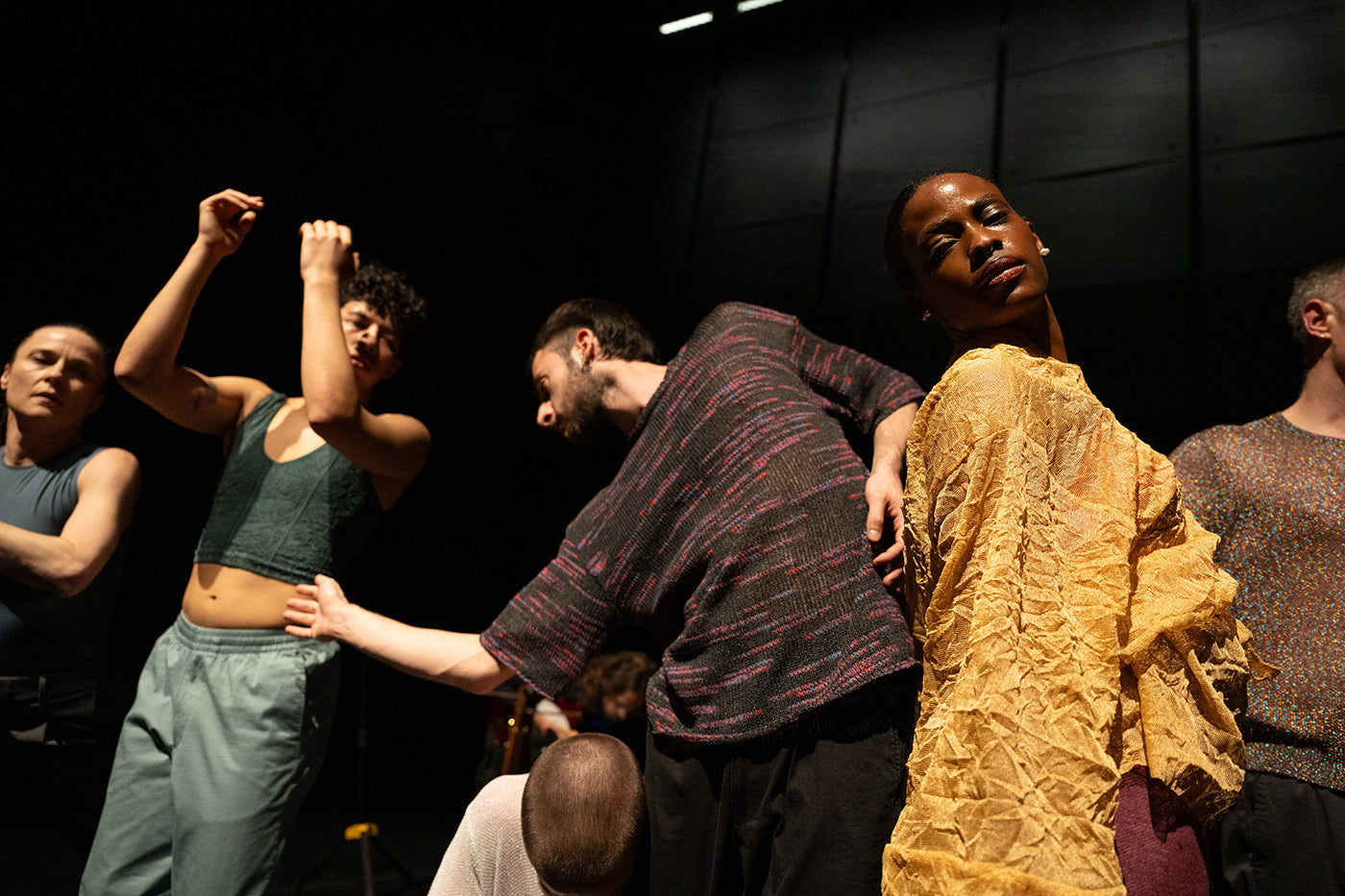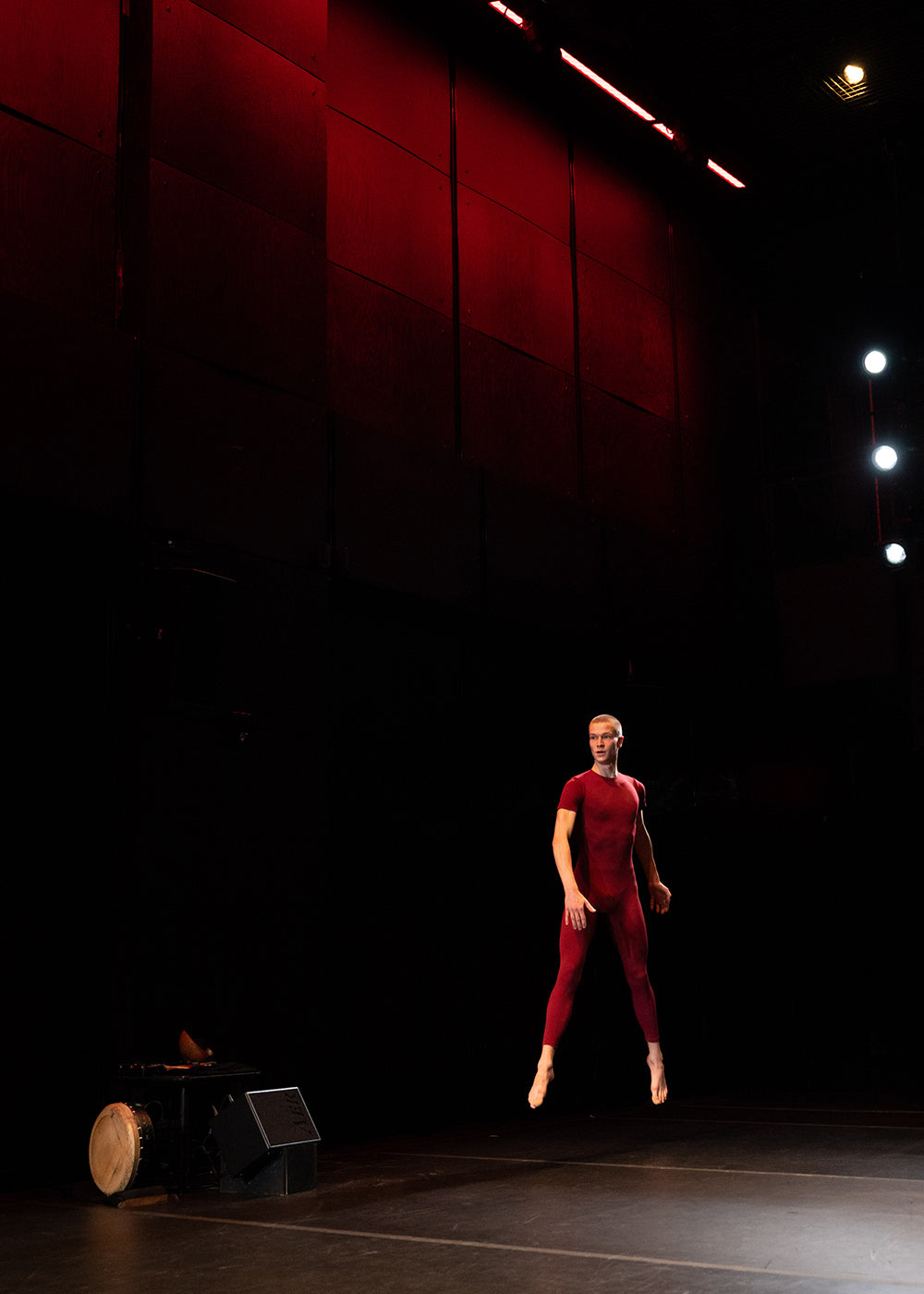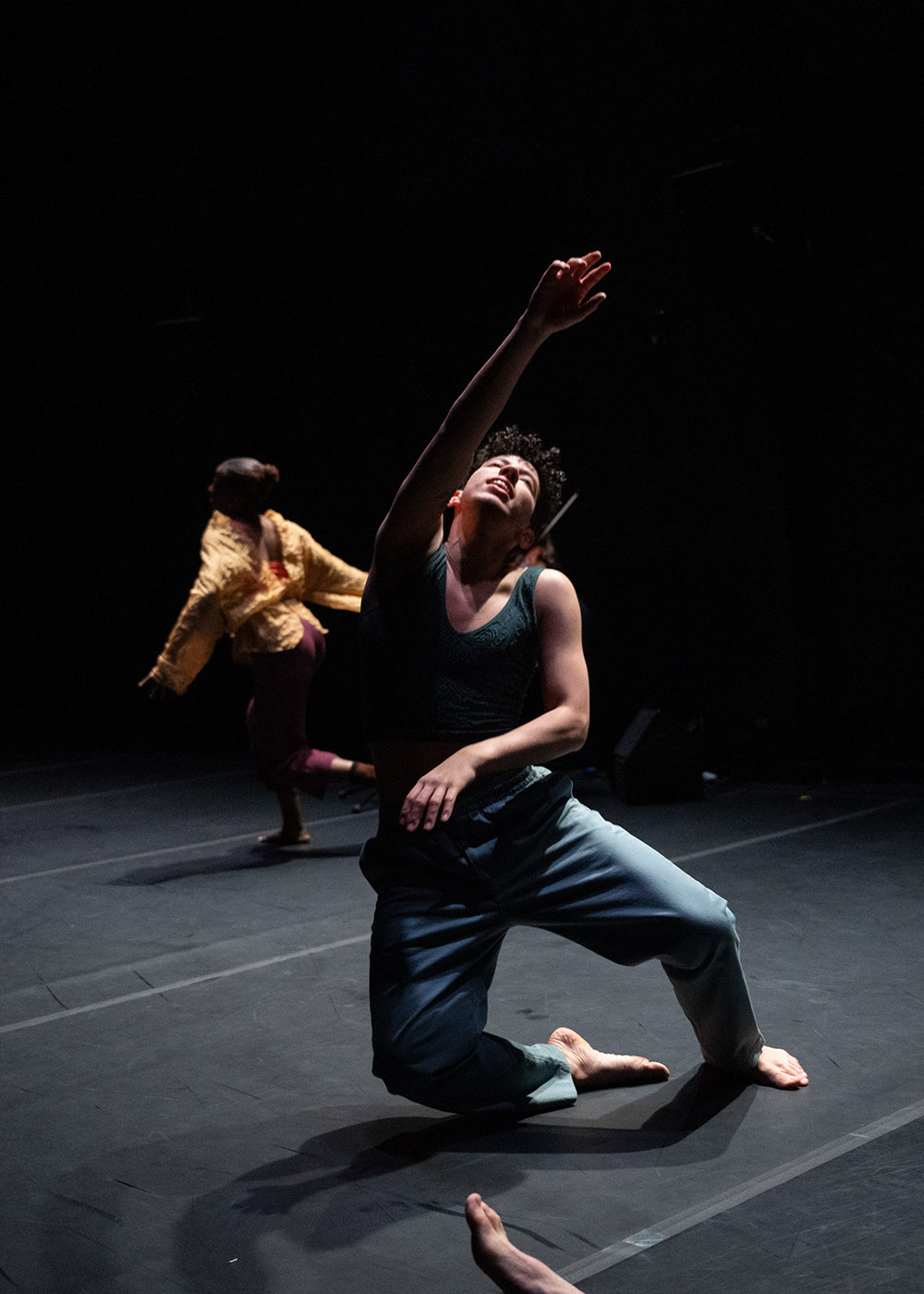Cunningham might be most celebrated for his choreographic ingenuities in regard to form, chance, and, with Cage, a newfound relationship to music, but his movement style equally distinguished himself as an artist. “Begin Anywhere” was preceded on the Irish Arts program by an arrangement of five Cunningham solos performed by members of Scott's group as well as Lindsey Jones, frequent performer of Cunningham work and celebrated dancer with Pam Tannowitz Dance. The arrangement included solos from Cunningham's “Changeling” (1957), “Solo” (1975), “Antic Meet” (1958), and “RainForest” (1968), all of which reminded the audience of Cunningham's brilliant movement language.
In “Changeling” and “Solo,” which were performed by François Malbranque and Boris Charrion, respectively, Cunningham's twisted, uncomfortable-looking, creature-like formal vocabulary is on full display. The dancers, wearing unitards traditional of the Cunningham company, squeeze themselves into tight, curved balls on the floor, jump in repetitive triangular positions, and perform excruciatingly slow adagio sections which move through deep pliés into asymmetrical balances. By formalizing extreme positions in the body—curves and arches, twists and tilts, diagonal positions of the arms and legs—Cunningham created a unique geometric yet otherworldly movement expression that is instantly recognizable.
In “Begin Anywhere,” Scott acknowledges Cunningham's technique but with a contemporary style that lacks a distinctive voice. The dancers' torsos curve forward and arch backward, but unlike Cunningham's held positions, Scott's are relaxed, like those of modern release techniques. Other movements draw influence from Gaga—with the dancers exploding into shakes—or from a combination of contemporary floorwork.
This is not to say that “Begin Anywhere” is not engaging: The dancers are powerful, athletic movers, and Scott's use of space could be hypnotizing. Making use of the horizontal breadth, the dancers continually circled around the space, marking disordered time with their erratic counting.
After moving round and round, all of a sudden, the cycle would break, and the dancers would rush to a scatter. They'd restart or start anew, and the piece, itself, would begin all over again.









comments